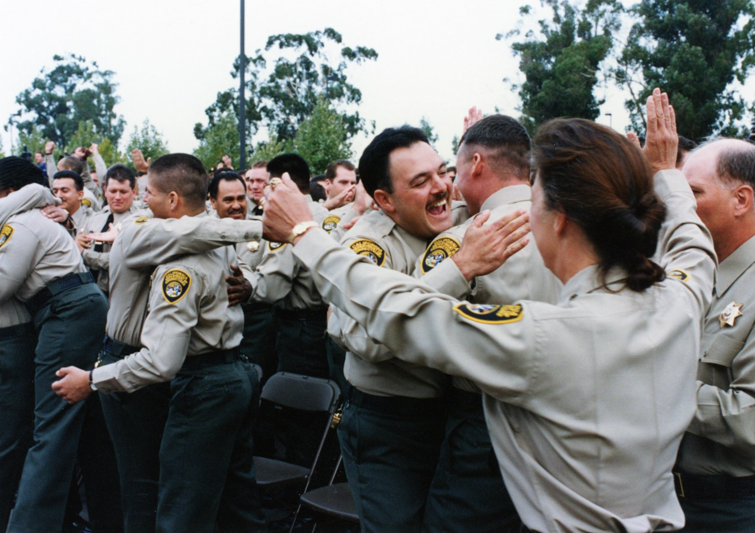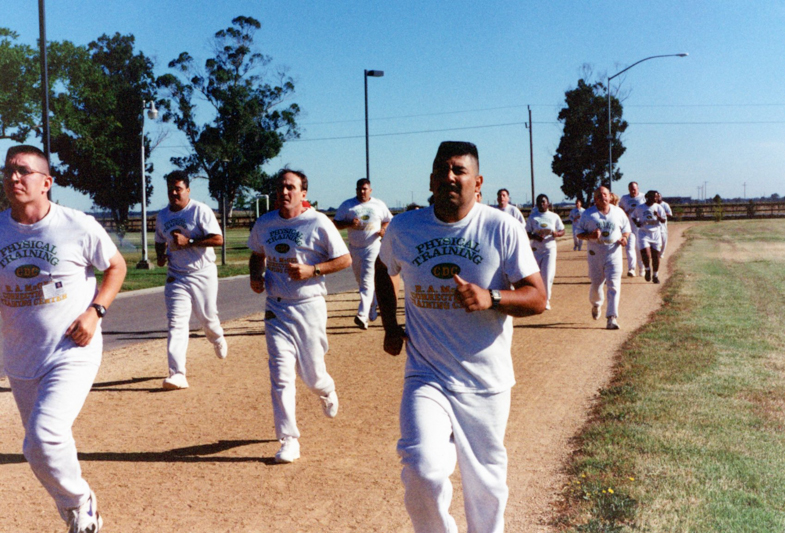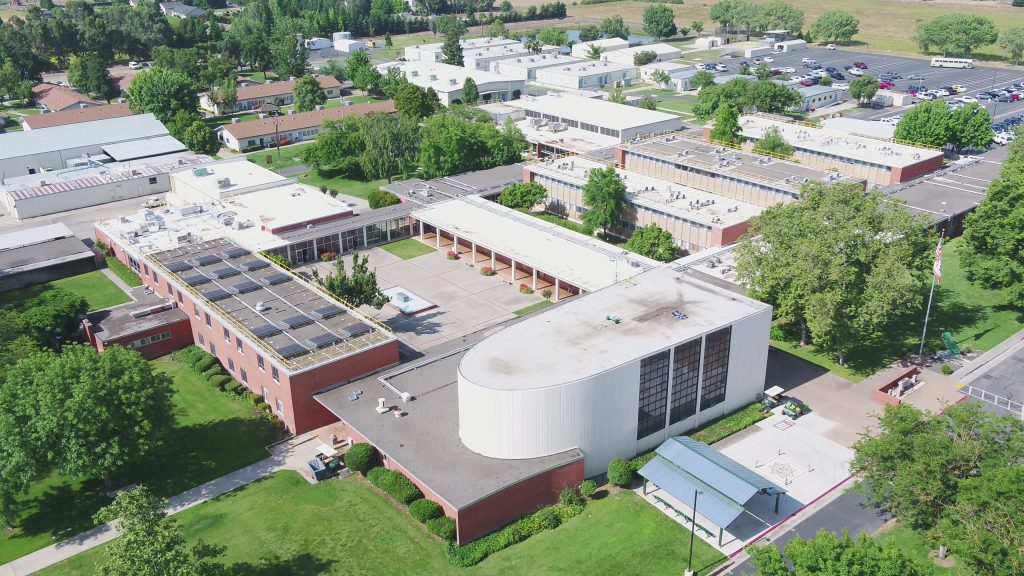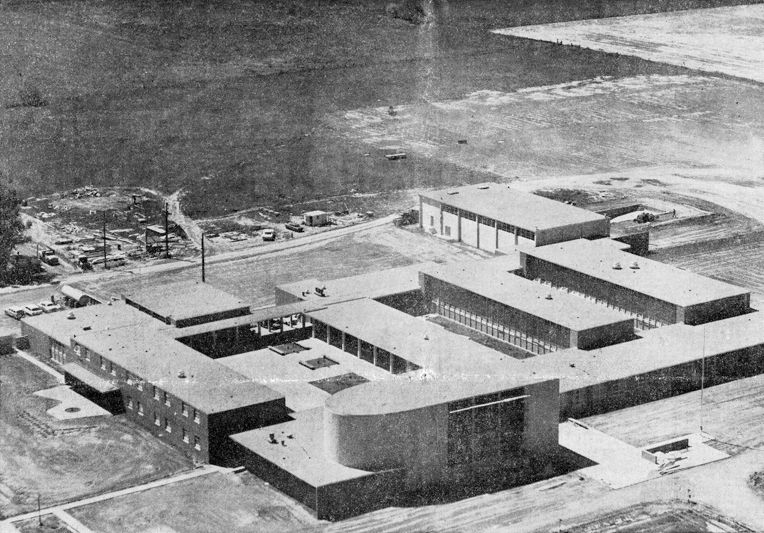RA McGee Correctional Training Center has graduated thousands of officers
Surrounded by pastures, nestled just outside the small northern California town of Galt, sits the Richard A McGee Correctional Training Center.
Today, the facility houses the Basic Correctional Officer Academy and other staff training. Since 1983, thousands of correctional officer cadets have made their way through the academy. But originally, the school trained priests.
Correctional Training Center early years
According to the Roman Catholic Diocese of Sacramento, “St. Pius X Minor Seminary relocated (from Humboldt County) to Galt in 1961, housing 200 students a year … until its closure in 1977.”
St. Joseph Parish in Elk Grove credits Father Patrick Gilligan with securing the land to construct the seminary.
“(He) was also responsible for a sizeable donation of land given as a gift to the Diocese for the purpose of building and establishing a Seminary and home for the Salvatorian Order on Twin Cities Road west of Highway 99,” the parish states in their Voices from the Past series.
According to the California Department of Corrections and Rehabilitation records, the seminary was constructed in 1959.
The Galt facility even had some special touches, including a 28-foot by 36-foot stained glass window, which later found its way to a church in Orangevale.

“In 1961, the Diocese of Sacramento commissioned Max Ingrand of Paris, France, to design a major stained glass window to enhance the chapel of St. Pius X Seminary (in) Galt,” according to the Divine Savior Catholic Church’s literature.
Window finds new home
“In 1977, St. Pius closed as a school. Later the Diocese of Sacramento decided to sell the property to the State of California. Several parishes became interested in the window for their new buildings but the size of the window made it difficult.
“Simultaneously, Divine Savior Church was being organized in Orangevale. The shape and the size of the stained glass window drove the shape and the size of the building. The solution was to make the stained glass window an inner wall with a larger cupola above it.”
The opening of the Galt school made the front page of the Catholic Herald newspaper on April 20, 1961. The paper was published by the Catholic Diocese of Sacramento.
“Thousands to attend new Pius X Seminary dedication,” the paper proclaimed. “All are invited to witness the actual blessing ritual, performed by Pope John’s official representative in the United States, Archbishop Egidio Vagnozzi.”
The newspaper published an aerial photograph of the school as construction was nearing completion.
Officer training mandated

Much like when the department was officially created in the 1940s, there were calls for prison reform in the late 1960s and early 1970s.
The State Board of Corrections issued a report to Gov. Ronald Reagan on Nov. 3, 1971, which made numerous recommendations.
The report advised “adding 405 new staff positions to the state’s 13 major correctional institutions, schedule board visits to all institutions (and) study training requirements of all correctional personnel.”
The following year, a report urged the state to focus more on training correctional officers. According to the Feb. 17, 1972, issue of the Desert Sun newspaper, a legislative staff report “called for the creation of an academy to train state correctional personnel.”
In November 1972, Sen. Craig Biddle, of Riverside, pushed through a bill setting aside $450,000 to establish a training academy within the department.
Heeding the 1972 report, an officer training academy was offered starting the same year at the Modesto Junior College. Training was moved to Galt 11 years later.
Moving to Galt
“Beginning today, the (department) will occupy the St. Pius Education Center near Galt. Owned by the Catholic Church, the center will be used … for training correctional officers,” reported the Lodi News-Sentinel, March 3, 1983. “The first 75 cadets will arrive from Vallejo. Later, they will be joined by an additional 138, according to Conrad Holmes, chief, departmental training of the state corrections department in Sacramento. Eventually the facility (will) house more than 300 cadets year-round, with an additional 30 staff members to train and feed them.”
Holmes told the newspaper it made sense to assume use of the school.
“It was much more economical for us to move into the school,” he said. “The (center) was built for a school. The church has done a magnificent job keeping it maintained.”
Constructing a brand-new facility would have cost an estimated $7 million, according to Holmes.
“The department dedicated the Richard A McGee Correctional Training Center in 1983, seven months before McGee died at age 86,” reported CDC Today, summer 2002 issue.
The state leased the building with the option to purchase the site, according to the newspaper. According to CDCR records, the lease purchase buy-out date was Jan. 1, 2001.

Officers needed
By 2016, the department plans to hire 7,000 correctional officers to help replenish the ranks after many retire. The current hiring effort hearkens back to the 1980s and 1990s, when thousands of new officers were hired to activate newly opened facilities.
In 1983, the department was hiring “3,000 officers within the next year,” reported the Lodi News-Sentinel, March 3, 1983.
A few years later, the department was hiring many more.
“The (department) will be hiring 5,000 correctional officers during the next year,” reported the Lodi News-Sentinel, March 31, 1987. “(Over the next) four years, 10 new correctional facilities will be built in the state and the department is now making a massive hiring effort. Starting salary is $2,246 per month.”
Stephen Ballachey, recruitment analyst for the department, stressed correctional officers aren’t “guards who protect warehouses, banks and stores.” He told the paper they are law enforcement professionals who “manage, control, train and supervise adult offenders, both male and female, in a manner that ensures the safety of the public, other employees and the offenders themselves.”
Later, the department estimated “it will need 1,300 new (officers in 2000), while the youth authority will need about 480 youth officers each of the next three years,” reported the Lodi News-Sentinel, Oct. 13, 2000. The starting salary was approximately $2,800 per month at the time.
In 2015, correctional officers earn $3,050 per month during the academy and $3,774 after academy. The top pay scale is $6,389 per month, according to the CDCR website.
Famous former seminary student
LeVar Burton starred in the original TV mini-series “Roots” as well as “Star Trek: The Next Generation.” He was also known for his educational children’s show, “Reading Rainbow.” At 13, he enrolled in St. Pius but acting became his passion.

In an interview with SacTown Magazine, Burton said, “Once I decided not to become a priest, it was a matter of finding something (else) that I could do with my life. We had a great theater tradition at St. Pius, and I became really passionate about acting. I got bitten by the bug. We did ‘Murder in the Cathedral,’ ‘Mister Roberts,’ ‘The Odd Couple.’ It was an all-boys school, mind you. We tried to do shows that did not require women.”
On June 21, 1999, he told the L.A. Times, “I stayed at St. Pius until I was 17. It was only as a result of being completely immersed in that environment, in that culture, that I knew I didn’t want to become a priest. I moved to Southern California to study theater at USC. I didn’t have a name for it then, but I know now that what I decided was that maybe it was possible for me to be a spiritual warrior without having to wear a collar.”
Burton’s current project is a remake of “Roots,” for which he is serving as a producer. It will air in 2016 on A&E, Lifetime and History (formerly the History Channel).
By the numbers
While the training center doesn’t house incarcerated, some have work assignments at the facility.
“We are contracted with Mule Creek State Prison for level one (incarcerated workers) and up to 25 with one transporting Officer. They travel down five days a week and they work a full day,” said Lt. Kevin McCoy, Public Information Officer for the training center.
Also, during the peak of training, kitchen staff prepared “three hot fresh meals a day totaling roughly 1,900 meals per day,” he said.
The Sierra Auditorium can hold 1,230 people in 10,582 square feet of space.
In 2000, the total facility space was listed at 225,000 square feet creating a “campus-like setting,” according to CDCR records.
Academy Administrator Robert M. Calderon said many of today’s custody staff have gone through the academy.
“Although the Correctional Training Center has been utilized for several different purposes throughout its history, it has been the starting place for most correctional custody staff still employed by CDCR today,” he said. “The need to provide professional, well-trained and knowledgeable correctional officers to ensure public safety is ever growing. The CTC provides the facilities for our exceptional cadre to efficiently turn cadets into Correctional Officers.”
Timeline
- 1959 Catholic school construction begins on donated land. Facility is meant to serve as an addition to St. Pius X Minor Seminary’s main campus in Humboldt County.
- 1961 St. Pius X Minor Seminary fully relocates to new larger facility in Galt. A dedication is held Sunday, April 23, 1961.
- 1972 Legislative report calls for creating a training academy for correctional officers. First academy offered at Modesto Junior College.
- 1977 St. Pius school closes.
- 1983 State leases property, with option to buy, and names facility Richard A. McGee Correctional Training Center. First cadets arrive at new academy.
- 2001 State purchases property.
By Don Chaddock, Inside CDCR editor
Historic photos compiled by Eric Owens, CDCR Staff Photographer

Learn more about California prison history.
Follow CDCR on YouTube, Facebook, X (formerly Twitter). Listen to the CDCR Unlocked podcast.
